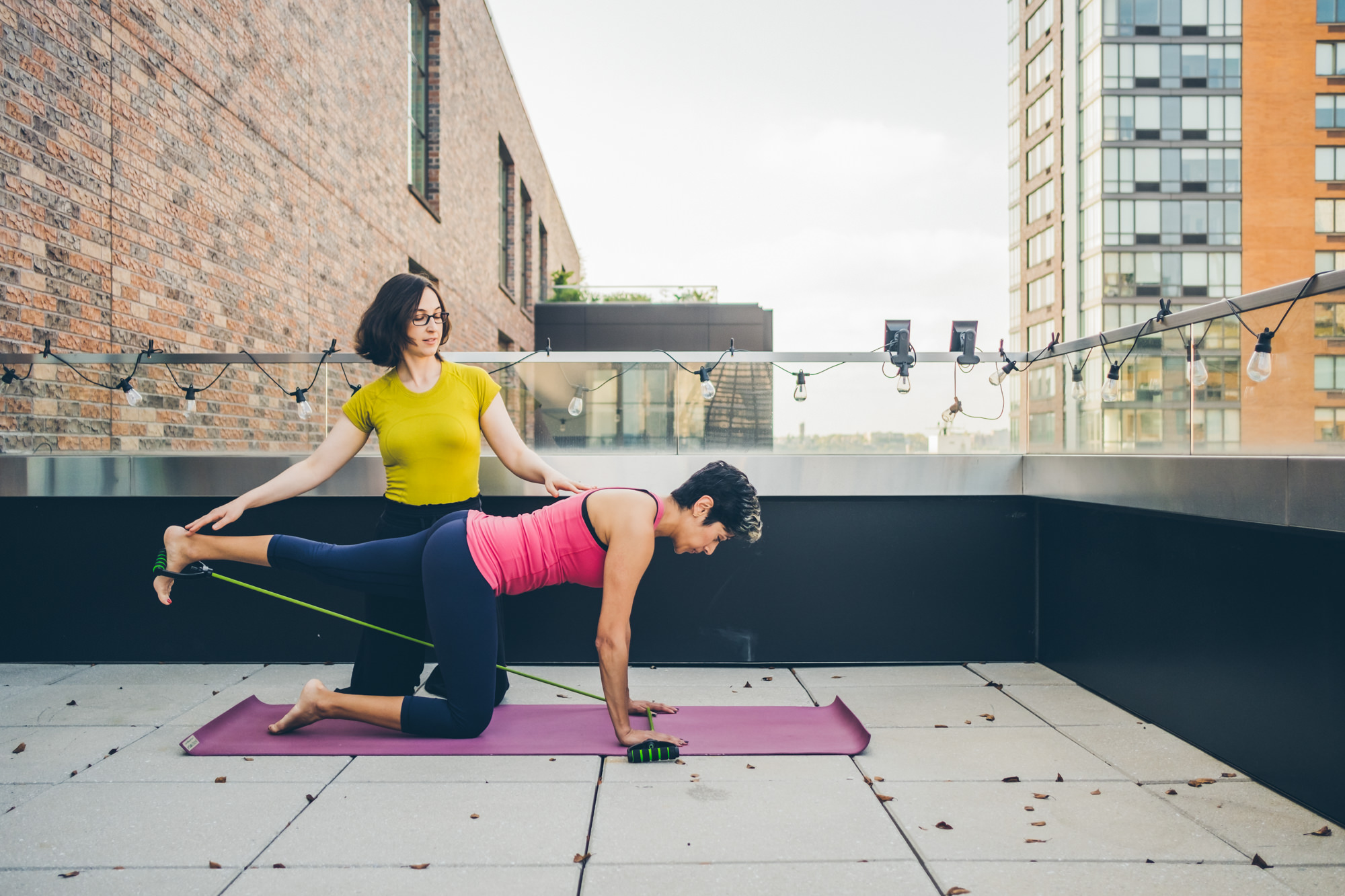Always check with your doctor or midwife before starting any movement postpartum. Most women will get the green light on beginning with these gentle exercises.
Postpartum exercise, healing from pregnancy and delivery
As a prenatal/postnatal personal trainer I was well aware that it takes time for a woman’s body to heal after giving birth. And yet, somehow with my own body I was surprised after my daughter was born to find that my belly felt like a squishy, spongy pillow. Not to mention that I still looked very pregnant. I can not emphasize enough how important it is to give yourself the time, space, and kindness that your body and mind need to heal. I struggled with the pressure to return to my postpartum body as quickly as possible, but I now cringe when I hear women talk about needing to “bounce back”. Your body just grew and birthed a human being. Can the goal instead be to heal and recover from pregnancy and childbirth?

1. Walking postpartum
Start going for short gentle walks as soon as you are up for it. According to Mayo Clinic “If you had an uncomplicated pregnancy and vaginal delivery, it’s generally safe to begin exercising a few days after giving birth or as soon as you feel ready. If you had a C-section, extensive vaginal repair or a complicated birth, talk to your health care provider about when to start an exercise program.” Begin by taking walks at a pace that feels comfortable for you starting with 5-10 minutes and building up to 30 minutes a day. I also found this reduced fussiness in my baby if I took her out in the stroller.
2. Belly breathing
Belly breathing is an effective way to reduce stress and anxiety, as well gently restore health in the abdominals and pelvic floor. This video from Yoga Tune Up demonstrates and explains how to practice belly breathing. It is easiest to learn laying down and can be done in bed or on the floor. Once you’re comfortable breathing on your back, try doing it while seated or standing. I often practiced it while sitting up feeding my baby.
3. Pelvic tucks

Pelvic tucks are a safe way to start strengthening your core and pelvic floor postpartum. Building on the belly breathing (see video above), begin by laying on your back, with your knees bent and feet on the floor. Inhale, expanding your belly with air, as you exhale draw your belly button in and up, while gently pressing your lower back towards the floor. Inhale and return to a relaxed position. Repeat 10x.

4. Neck and shoulder exercises for new parents
A vital part of postpartum care is shoulder and neck stretches to relieve tension from feeding, holding, and caring for your baby. No matter how you are feeding your baby, caring for a little one involves a lot of awkward positions, holding, picking up, and putting down, which can result in neck and shoulder tension. This sequence typically helps reduce aches and pains caused by feeding and caring for your baby and can be done as needed or every day to prevent tension.

5. Icing and elevation for postpartum healing
In the same way you would be advised to elevate and ice after an injury or surgery in your knee, the same advice can be given following a vaginal or c-section delivery. Padsicles are a great way to ice your vagina postpartum. There are also DIY padsicles. Try to spend some time every day laying down to help elevate your pelvis and abdomen.

Additional resources for postpartum healing and recovery
For further resources on healing your postpartum body I highly recommend these articles: postpartum body, and the fourth trimester. And for some very detailed information on what to expect from your body in the immediate postpartum period as well as a lot of information on breastfeeding and other early baby decisions, I strongly encourage you to read Cribsheet: A Data-Driven Guide to Better, More Relaxed Parenting, from Birth to Preschool (The ParentData Series) by Emily Oster
For guidance on how to exercise after you’ve been cleared for exercise from your doctor or midwife, reach out to Morgana Tessler for a complimentary consultation to check for diastasis recti, and discuss a postnatal workout plan that is safe, effective, and enjoyable for you.
